Class 33 Biochem Unit 4 (Glycogenolysis and Lipolysis)
1/26
There's no tags or description
Looks like no tags are added yet.
Name | Mastery | Learn | Test | Matching | Spaced |
|---|
No study sessions yet.
27 Terms
Learning objectives
1. Identify the hormone secreted during the fasting (unfed) state.
2. Describe the pathways activated during fasting (unfed) state and where each process occurs.
3. Describe the structure and function of glycogen.
4. Differentiate between glycogen stored in muscle vs. liver. Describe how the body uses liver
glycogen compared to muscle glycogen.
5. Describe the steps involved in glycogen breakdown.
6. Explain the steps of the signaling cascade starting with glucagon (or epinephrine) and ending with
activation of glycogen phosphorylase.
7. Explain how glycogen phosphorylase stimulates breakdown of glycogen into glucose.
8. Describe how glycogen phosphorylase is regulated.
9. Describe the signaling cascade initiated by glucagon (or epinephrine) stimulates breakdown of fat
(triacylglycerol) into fatty acids.
10. Describe how the glucagon signaling cascade is turned off.
11. Understand the difference between a reaction catalyzed by a kinase (e.g. Protein Kinase A) versus
glycogen phosphorylase.
Glucagon hormone
released when blood glucose is low

Which of the following is responsible for restoring blood glucose levels to normal levels upon glucagon signaling?
Liver glycogen
Information about glycogen
-glycogen breakdown in the liver: replenishes blood glucose levels
-glycogen breakdown in the muscle: muscle glycogen stores are mobilized to provide energy for muscle contraction, NOT released in response to low blood glucose levels
Glycogenolysis
the breakdown of cellular glycogen to glucose 6-phosphate
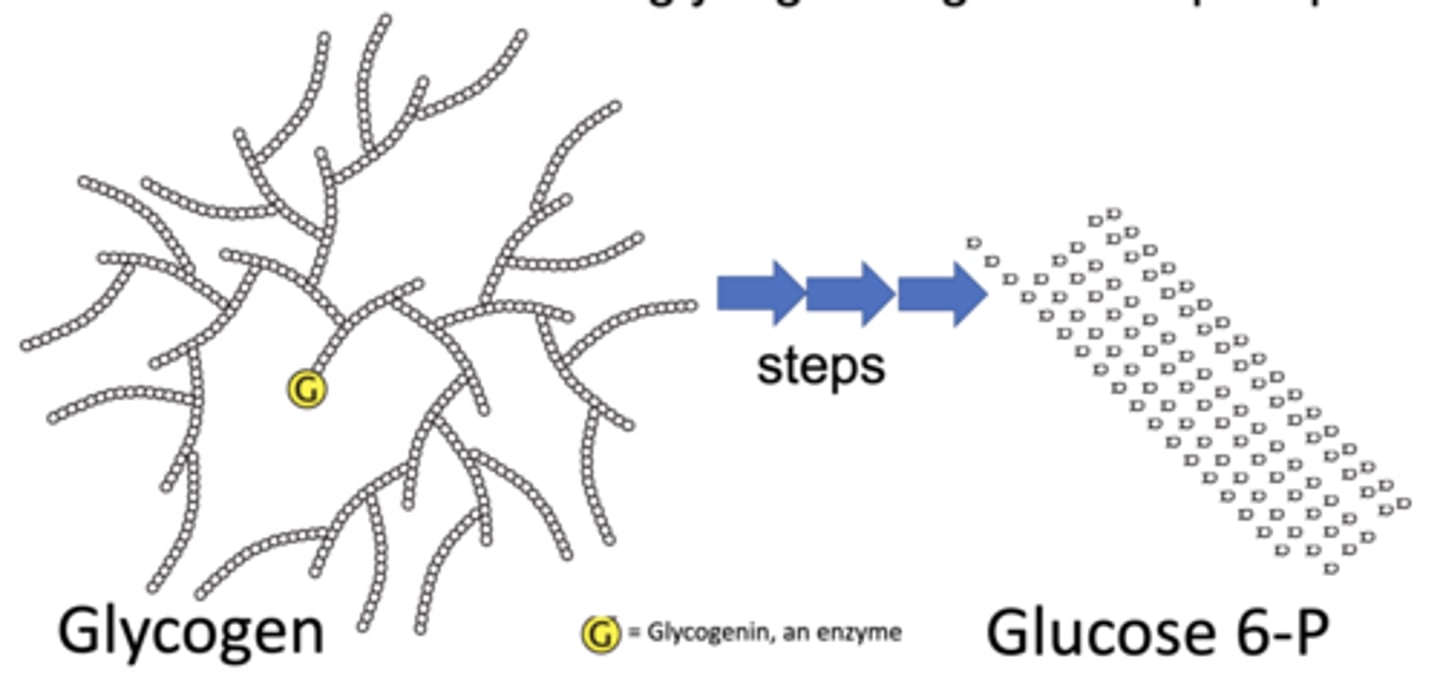
First step of glycogen breakdown
releases glucose 1-phosphate (G 1-P) from glycogen
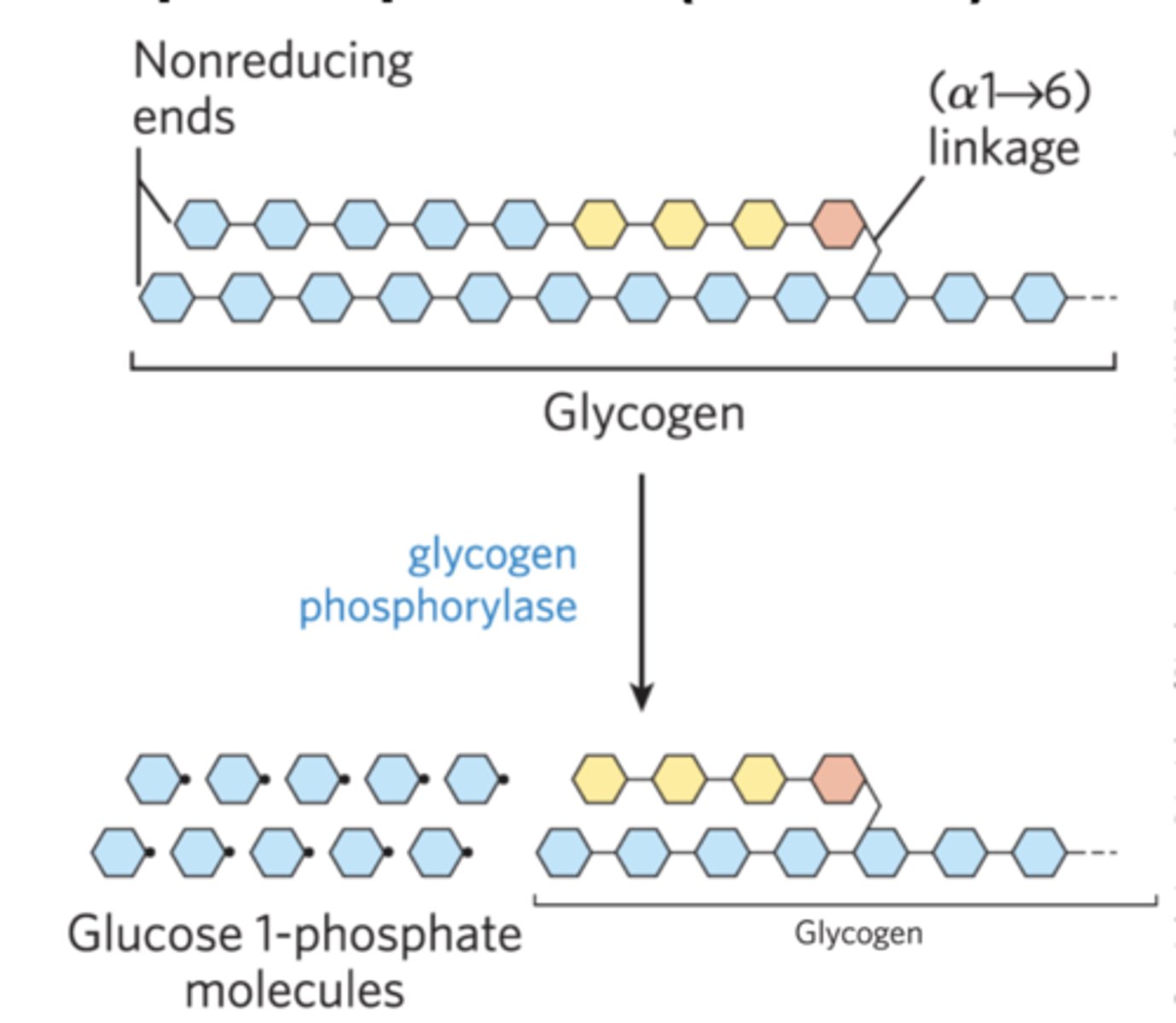
glycogen phosphorylase
catalyzes glycogen breakdown by phosphorlysis
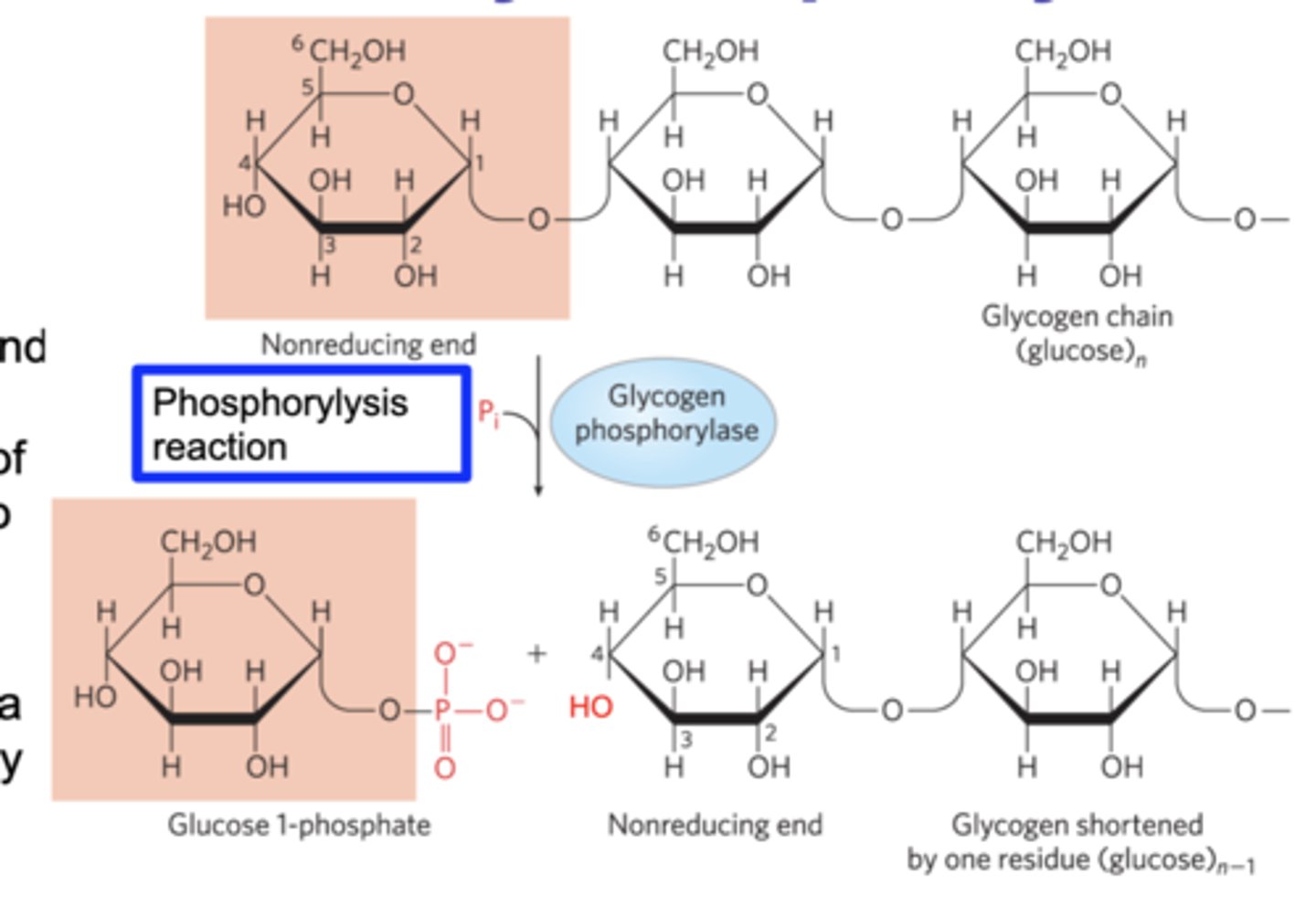
Phosphorolytic cleavage
at the nonreducing ends of glycogen chains
Advantage of phosphorylysis
the energy of the alpha-(1,4) bond is used to add phosphate to glucose (forming G1P) instead of using a triphosphate (ATP) to do so. This saves energy for cells.
Which of the following is used in a phosphorylytic cleavage of glycogen releasing glucose 1-phosphate
Pi (inorganic phosphate)
Debranching enzyme
Transfers branches onto main chains and releases the residue at the (alpha1->6) branch as free glucose
Rapid release of glucose 1-P from glycogen
favors the isomerization reaction to form Glucose 6-P
-this reaction is readily reversible and the direction of the reaction depends on the concentration of substrates
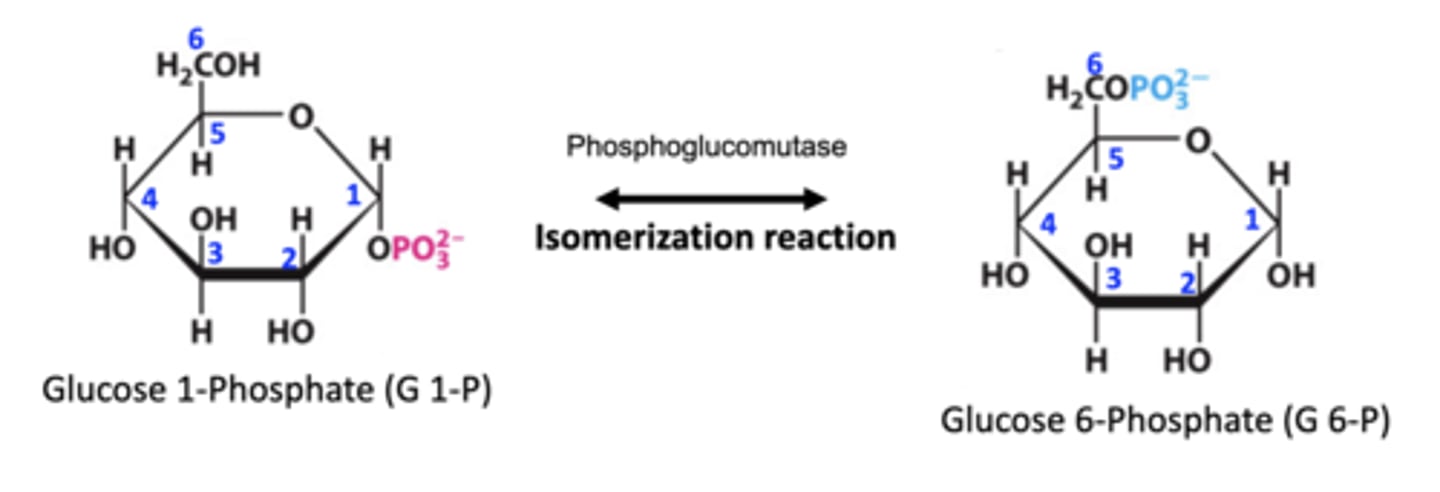
Fates of Glucose 6-Phosphate from glycogen breakdown
Monomers of glucose are released from glycogen granules by a phosphorolysis reaction that creates phosphorylated glucose molecules that can:
-in the muscle cell: enter glycolysis to supply energy (ATP) to cells
-in the liver cell: the phosphate can be removed, allowing free glucose to be transported out of the cell to replenish levels of circulating blood glucose, that can be used in the brain and other tissues when dietary glucose is not sufficient
Glucagon binds receptor
initiates signaling cascade to activate PKA which is required to activate glycogen breakdown in liver cells
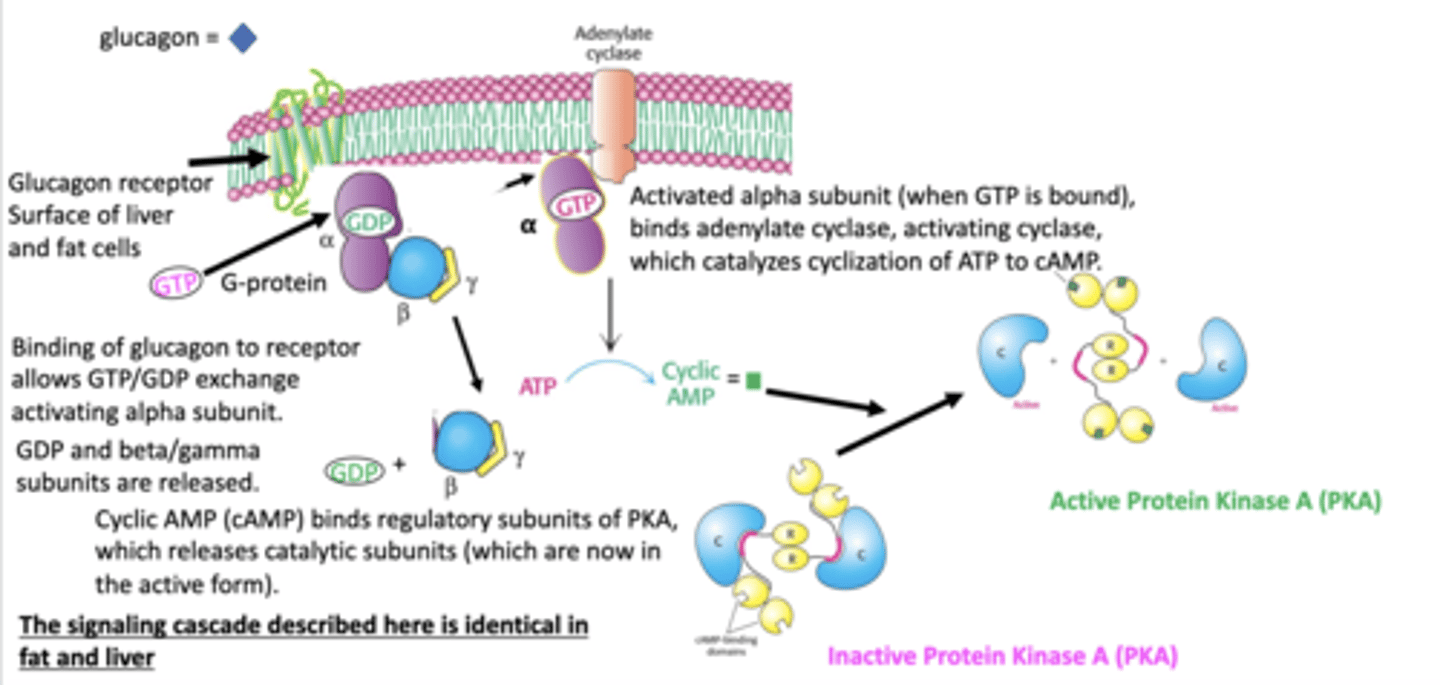
G protein coupled receptors (GPCRs)
-seven-transmembrane (7tm) or heptahelical receptors span the membrane seven times interact with heterotrimeric G proteins
-Herterotrimeric G proteins or guanine nucleotide binding protein conserved family of signaling proteins with three subunits: alpha, beta, and gamma
-alpha subunit is the binding site for GDP or GTP
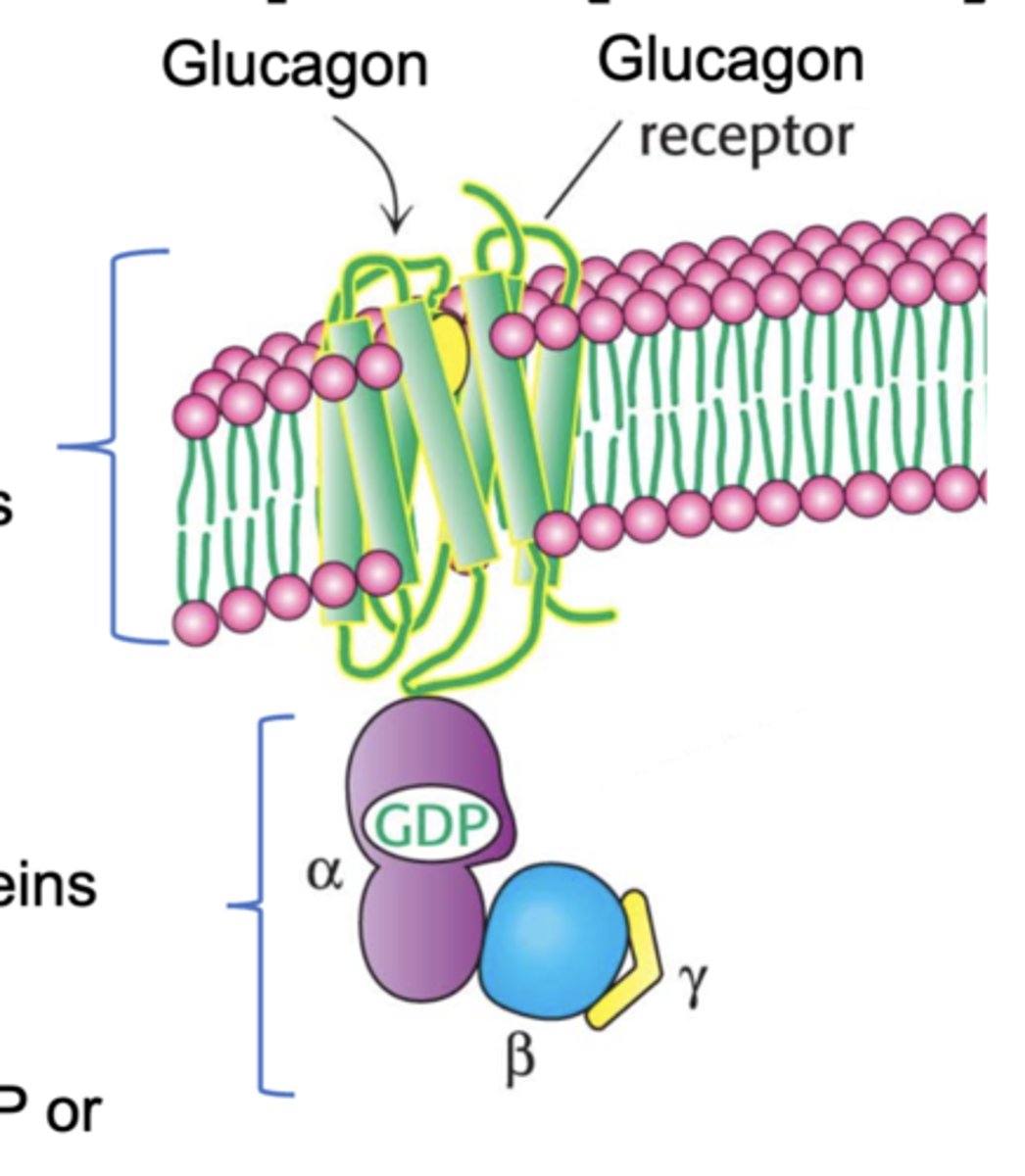
cAMP
stimulates Protein Kinase A (PKA) activity
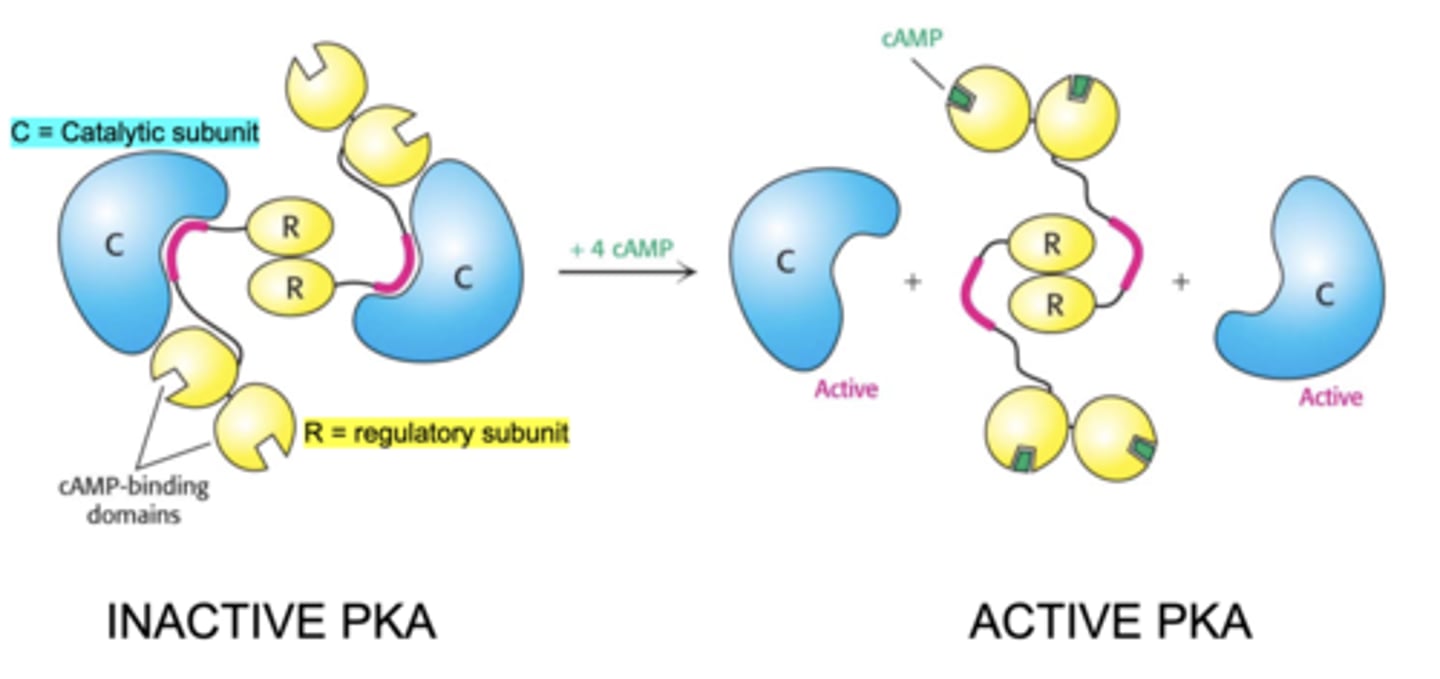
Kinases
modify substrates by phosphoryl group transfer
-typically proteins are phosphorylated on the hydroxyl groups of Ser, Thr, or Tyr

Serine, Threonine, and Tyrosine
the most frequently phosphorylated amino acids in proteins
Phosphorylase
catalyzes a phosphorylysis reaction
-the phosphate is the attacking species and becomes covalently attached at the point of bond breakage.
-like a hydrolysis reaction, except the Pi is used instead of a H2O molecule

Activation of glycogen phosphorylase
starts glycogen breakdown
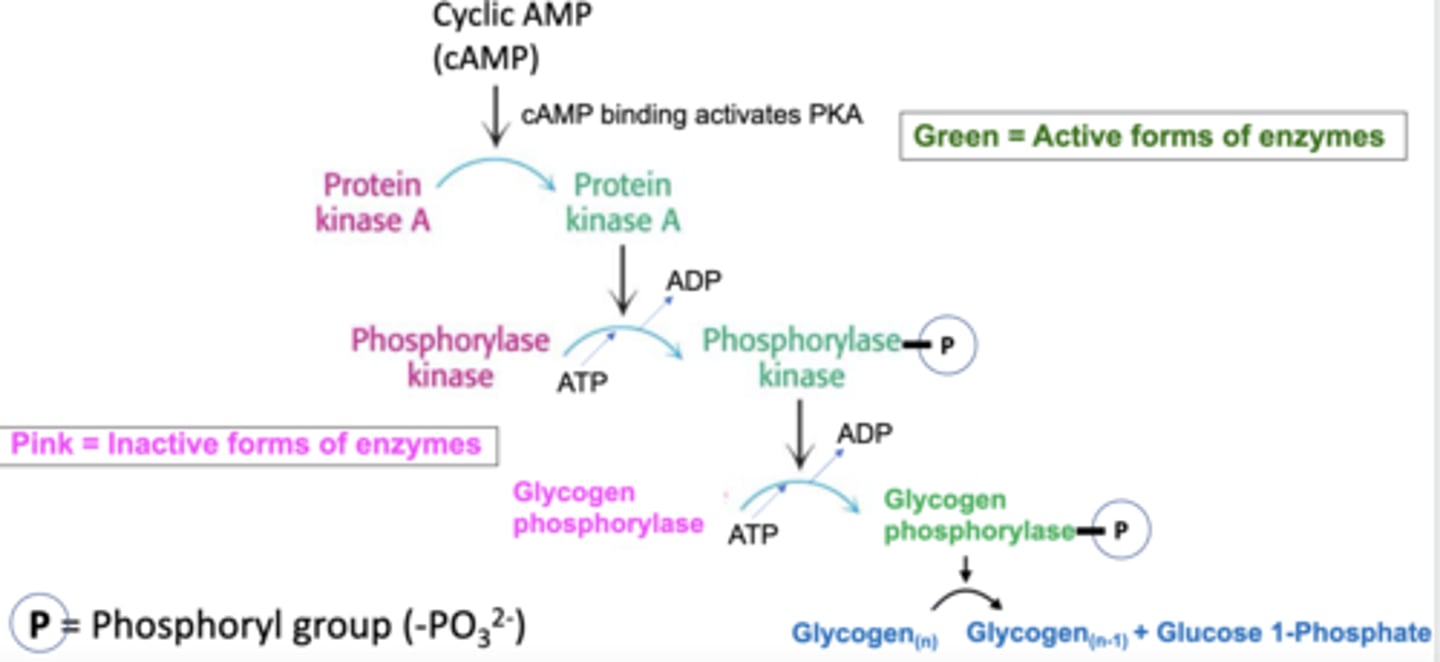
Phosphorylation of glycogen phosphorylase
results in structural changes making it active for glycogen breakdown
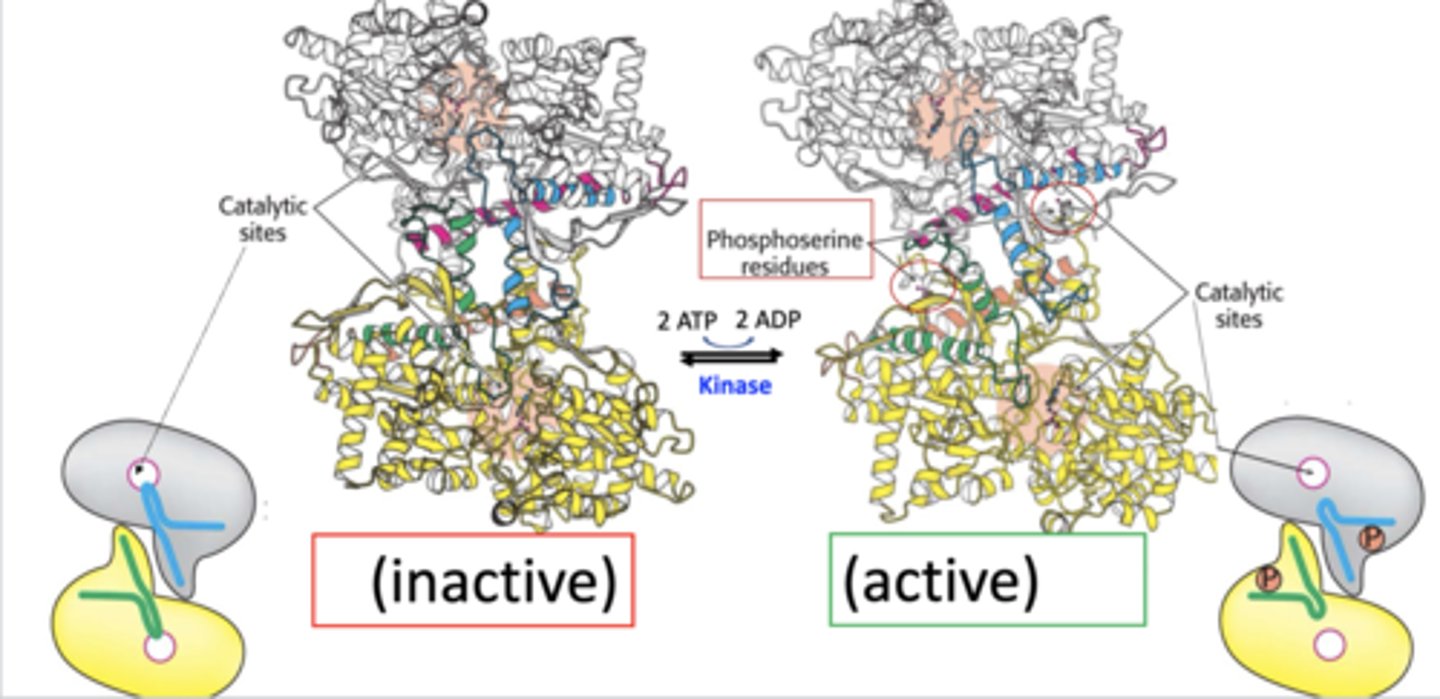
Common theme
post translational modification of enzyme can modulate its activity
Glucagon signaling pathway can be shut down multiple ways
1. Receptor interaction is reversible
2. Galpha has inherent GTPase activity that cleaves the bound GTP to GDP
3. cAMP phosphodiesterase converts cAMP to AMP which stops activation of PKA

If liver cells (hepatocytes) are replenishing blood glucose levels, which 'fuel' molecule will liver cells primarily use to generate ATP?
Fatty acids derived from triacylglycerols (TAG) in fat cells (adipocytes)
Fatty acid mobilization through glucagon signaling
-glucagon signaling activates PKA
-PKA activates lipase via phosphorylation
-active lipase catalyzes hydrolysis of triacylglycerols to free fatty acids
-fatty acids transported to other tissues to provide energy via beta-oxidation and aerobic respiration
Exercise stimulates epinephrine release
-epinephrine is a hormone released from adrenal glands that binds to receptors found on LIVER, FAT, and MUSCLE cells
-signals to breakdown glycogen in the muscle and liver breakdown triacylglycerols in fat cells
How many net molecules of ATP are produced in the muscle during glycolysis from a monomer of sugar that is derived from the breakdown of glycogen?
3